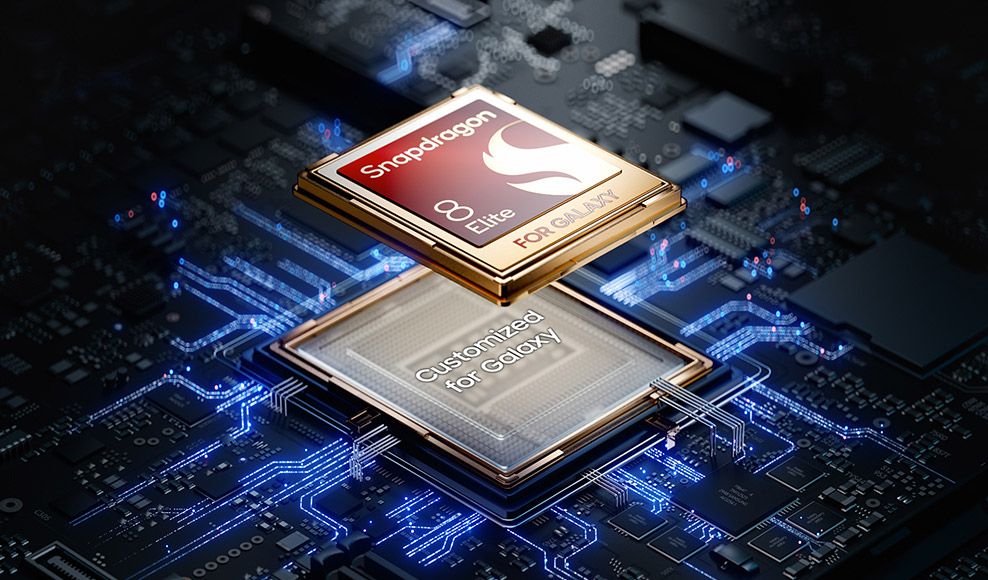Samsung sparked the smartphone market with the unveiling of its ultrathin Galaxy S25 Edge on May 12, 2025, ahead of Apple's anticipated iPhone 17 Air in September 2025.
Priced at $1,099 for preorders and set for retail on May 30, the S25 Edge boasts a 5.85 mm-thick titanium frame, outslimming Apple’s iPhone 16 Pro (7.8 mm) and Samsung’s own Galaxy S25+ (7.3 mm).
The S25 Edge, boasting a 6.7-inch AMOLED 2X display and a lightweight 163g design, redefines portability without compromising flagship performance.
This launch, showcased at a virtual Galaxy Unpacked event, positions Samsung as a pioneer in the ultrathin phone trend. Here’s a deep dive into the S25 Edge’s features, market impact, and what it means for consumers.
A Design Marvel: Thin, Light, and Premium
The Galaxy S25 Edge, measuring just 5.85 mm thick and weighing 163 g, is a triumph of engineering, making it noticeably slimmer than the iPhone 16 Pro (170 g) and Galaxy S25+ (190 g). Its 6.7-inch QHD+ AMOLED display, protected by Corning Gorilla Glass Ceramic 2, offers a 120Hz refresh rate and 1440 x 3120 resolution for vibrant visuals.
The titanium frame, available in Titanium Jet Black, Titanium Silver, and Titanium Icy Blue, ensures durability with an IP68 rating. Reports from hands-on use highlight its "shockingly thin" feel, making it perfect for those with small hands or tight pockets.
Despite its slim profile, the S25 Edge houses a 3,900mAh battery, which Samsung claims delivers all-day life through optimized power management and the efficient Snapdragon 8 Elite chipset. However, some express skepticism, noting the battery’s capacity may struggle for power users.
ALSO READ | Samsung Galaxy S25 Edge Set to Redefine Smartphone Innovation with Ultra-Slim Design and AI-Powered Camera
Camera Innovation with AI-Powered Precision
Samsung’s S25 Edge features a dual-camera system, a compromise to maintain its slim design, comprising a 200MP f/1.7 main sensor with optical image stabilization and a 12MP f/2.2 ultra-wide lens with a 120-degree field of view. Unlike the triple-camera setups on the S25+ and S25 Ultra, it skips a telephoto lens but leverages Galaxy AI for “optical-like” 2x zoom and up to 10x AI-enhanced zoom.
The ultra-wide lens now supports autofocus for macro photography, ideal for close-ups, while a 12MP f/2.2 front camera enhances selfies with a wider field of view. Samsung’s AI suite, including tools for photo editing and 4K 120fps video recording, elevates the camera experience, rivaling the S25 Ultra’s capabilities. TechRadar notes the S25 Edge’s “pro-grade” photography potential, though some lament the lack of a telephoto lens for long-range shots.
Performance and Software: Flagship Power in a Slim Package
Powered by the Qualcomm Snapdragon 8 Elite chipset, the S25 Edge matches the performance of the S25 series, paired with 12GB of RAM and storage options of 256GB ($1,099) or 512GB ($1,199).
Running Android 15 with One UI 7, it integrates Samsung’s Galaxy AI, featuring Now Brief and Now Bar for personalized reminders and news, alongside Google’s Gemini Live for real-time contextual insights.
The chipset’s 3nm architecture ensures efficient power use, critical for the smaller battery. Samsung’s cooling solutions and display optimizations aim to balance performance and battery life; however, some critics question whether the 3,900mAh capacity can sustain heavy use.
The S25 Edge’s $1,099 starting price positions it between the S25+ ($999) and S25 Ultra ($1,299), with preorders offering a free storage upgrade and $50 credit.

Did You Know?
Samsung’s Galaxy S25 Edge is the first smartphone to use Corning Gorilla Glass Ceramic 2, embedding ceramic crystals for enhanced durability and crack resistance, rivaling Apple’s Ceramic Shield.
Market Impact and Competitive Edge
Samsung’s launch preempts Apple’s iPhone 17 Air, rumored to be 5.5 mm thick but not arriving until September 2025. Bloomberg’s Mark Gurman notes the iPhone Air’s 6.2mm frame will lag behind the S25 Edge’s slimness, giving Samsung a first-mover advantage.
Samsung’s pricing strategy makes the S25 Edge more accessible than the $1,299 S25 Ultra, targeting consumers seeking premium features without bulk. However, competitors like Oppo’s Find N5 (4.21 mm when open) and Tecno’s 5.75 mm Spark Slim concept signal a crowded ultrathin market. Samsung plans to produce 3 million units, with initial shipments possibly limited to South Korea and China.
Stock Market Context
The launch aligns with positive momentum for tech giants. Apple (AAPL) stock rose 6.31% to $209.62, reflecting investor confidence despite Samsung’s competitive move.
Google (GOOG), whose Android 15 powers the S25 Edge, gained 3.37% to $159.135, buoyed by its Gemini AI integration. These gains suggest a robust tech sector, though Samsung’s private status limits direct stock comparisons.


Comments (0)
Please sign in to leave a comment